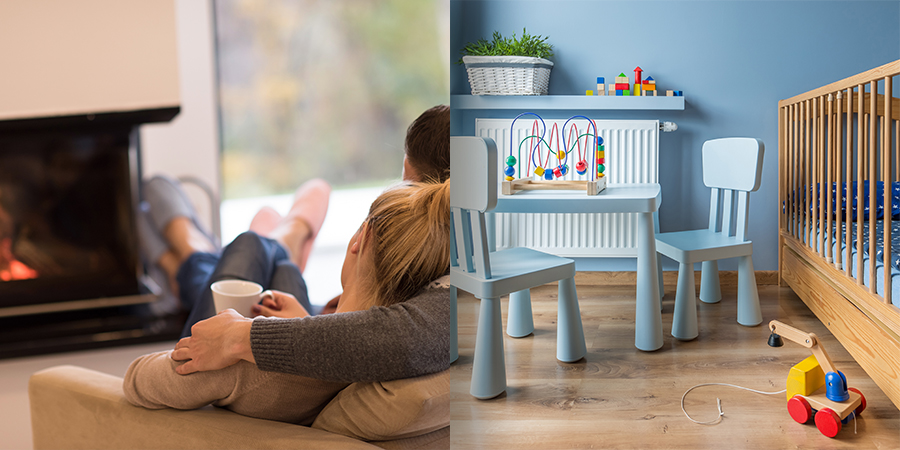Housing: recommended temperatures room by room
The ideal temperatures for the rooms of a home, this is a subject that everyone agrees on. Except for the chilly ones perhaps. We will detail them for you room by room, giving you a few little tips along the way. We will also see that a difference of just one degree can have repercussions on the energy bill…

Heating: small actions, big consequences
Having the right temperatures in each room of the house is a question of comfort, health and finally energy saving . Thus, by reducing the heating by just 1°C, you can lower your energy bill by 7%, which is not nothing.
19°C to 20°C in living areas (kitchen, living room, dining room)
In the kitchen, living room and dining room, the recommended set temperature is 19°C, but it can rise to 20°C or even 21°C.
Activating cooking appliances in the kitchen will temporarily increase the temperature, as will a flare-up in a wood-burning appliance, for example. On some boilers, the "reception" mode allows the set temperature to be maintained for longer and even increased (according to programming) so as to comfortably extend the evening.
16°C to 17°C in bedrooms
Does this temperature seem a little too cool? However, it is the recommended temperature for an adult's room, the one that best allows for recovery. An overheated room could dry out the airways, or even cause headaches.
The temperature of the baby's room should, however, be raised by 1°C to 2°C because newborns take several weeks to regulate their body temperature.
Are you teleworking?
If you telework from home, the office falls into the living room category (19°C).
If you work in your bedroom, turn up the heating during the day to a constant temperature of 19°C. In the evening, let the temperature drop slowly to around 16°C/17°C when you go to bed.
21°C to 22°C in the bathroom or shower room
It is the warmest room in the house, logically, because it is also the one where you shower and/or bathe. For a guaranteed bath-time without shivering, 21°C is a good temperature.
A question of feeling
If these temperatures are considered a good compromise between comfort and energy consumption, there is theory and practice.
Let's not be completely dogmatic, it is possible that the exposure to the sun of a room is favorable or unfavorable, that a room is more or less humid, etc. In this case, it will be necessary to modulate until an acceptable temperature is obtained.
Weather conditions can affect how we feel. At the same indoor temperature, a damp winter day may feel cooler than a cold, dry, sunny day. In this case, rather than turning up the heating, opt for an extra layer of wool.
5 tips for better control of temperatures and energy consumption
- Having thermostats (thermostatic or room) and sensors greatly facilitates the regulation and/or control of heating in the home. These devices allow the room temperature to be adapted according to the indoor and outdoor temperatures.
- Program your boiler according to your lifestyle. The standard settings may not be best suited to your wake-up times, bedtimes, or even the times you spend at home.
- If you are going to be away for several days, lowering the temperature in your home is essential to avoid wasting energy. In this case, 12°C is an ideal temperature, which will allow you to return to a normal temperature fairly quickly.
- The frost protection mode of your boiler becomes necessary for absences of several weeks and several months (in a second home for example).
- Ventilate daily and check the indoor humidity level. Ventilating the rooms of the house should be a reflex. Even in winter, a few minutes are enough because the indoor air must be renewed regularly. As for the ideal humidity level, it should be between 40% and 60%.











